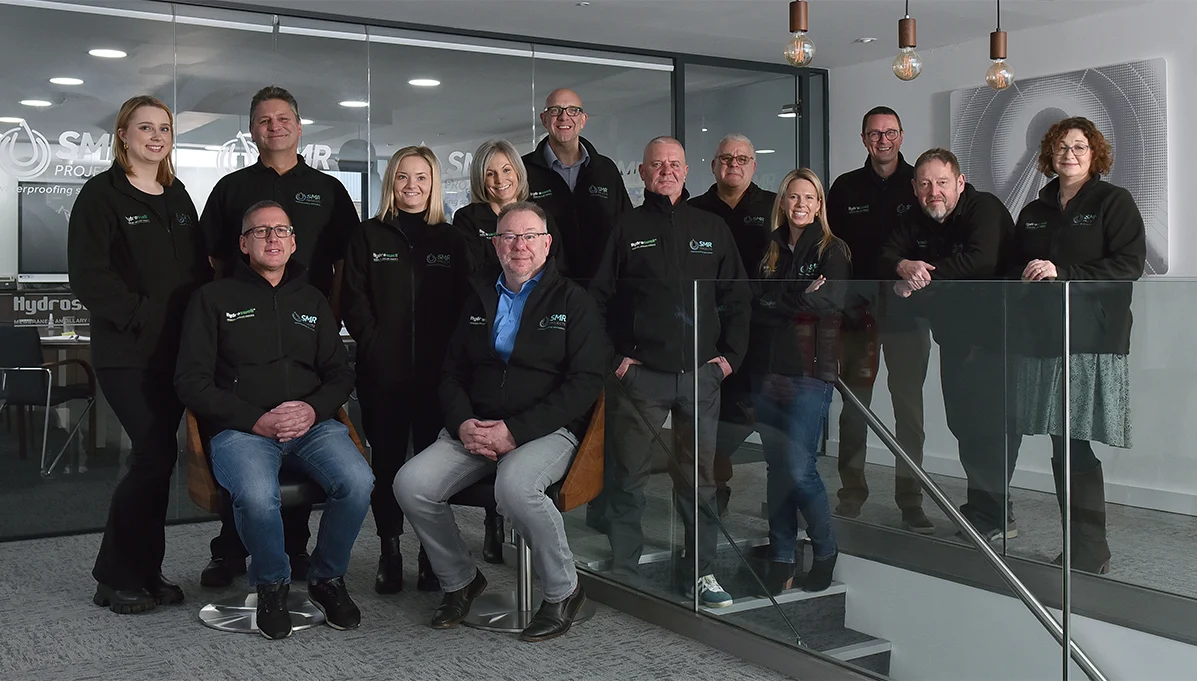British Standard BS 8102:2009 Grade 3 explained

Can a Grade 3 basement be achieved with one system?
BS 8102:2009 waterproofing protection
Basement grades are stipulated in the British Standard BS 8102:2009. (See table 2 of 6.2.3 “Water table classification and grades of waterproofing protection”.) This defines the grades in general terms, but gives no testing or performance criteria. However it is relatively clear as to how each grade is defined. Grade 3 is defined as dry, and generally termed as a habitable environment. It also determines the type of construction and lists these as A, B or C in table 1.
BBA waterproofing compliance
The actual performance of any waterproofing system for the UK is only noted as part of the test within the BBA certificate. With no performance criteria laid out within BS 8102:2009, the BBA have historically used the most suitable available test. This test is BS 3177:1959 “Method for determining the permeability to water vapour of flexible sheet materials used for packaging”, reflecting the origins of the BBA certificate.
Achieving British Standard Grade 3 with Xypex
Xypex BBA certificate precedes BS 8102:2009 and the original refers to BS 8102:1990. This has the additional Grade 4 (vapour proof/archive). The certificate states Grade 3 performance as 200 MN·s·g-1 and Grade 4 as 550 MN·s·g-1. However, in the most recent BBA certificates this morphs into both being relevant to Grade 3, as Grade 4 no longer exists.
With regard to Xypex’s tested performance this equates to achieving Grade 3 at 88mm thick and Grade 4 at 242mm thick, based on the mix designs stated within the certificate. With this in mind we have a practical minimum thickness for a single piece of concrete of 150mm for a Grade 3 and we used to have 300mm for a Grade 4.
Managing risk with combined systems
British Standard guidelines – The British Standard states that if the risk is high and/or the internal finishes are expensive, then consideration should be given to two methods of waterproofing (see table 1). This reflects an attitude to management of risk, rather than a consideration of product performance.
NHBC requirements – The NHBC issue its own Basement Guidelines, which are quite separate from, and in addition to, the British Standard. Chapter 5.4 of the NHBC Standards document deals with basement waterproofing. This states that two levels of waterproofing are generally required for grade 3.
Here is an exert from chapter 5.4 of the NHBC Standards document:
Risk-based design
Waterproofing should be appropriate to the risk, and generally assume exposure to a full height of water during the design life of the building.
Combined systems should be used where:
- a Grade 3 environment is needed, and
- the wall retains more than 600mm.
Alternatively, where the builder has demonstrated that the water table is permanently below the underside of the lowest floor slab, a Type B structurally integral concrete system is acceptable without further protection from a combined system.
A combined system includes
- Type A and Type B
- Type B and Type C
- Type A and Type C
This criteria does not relate to the performance of the material, but the likelihood of any material being placed 100% correctly first time, every time. This relies on the theory that the chance of failure has been halved by the probability of both systems failing at the same time.
Achieving Grade 3 with Xypex as a stand-alone solution
BS and NHBC guidelines take an approach to risk management that assumes all materials to be equal and inert. No consideration is given to any form of active self-healing crystalline structure, as found within crystalline admixture. This difference is clearly shown and described in the American Concrete Institute International Report ACI 212.3R-10 – Chapter 15 – Permeability Reducing Admixtures.
“Grade 3” as a term is now synonymous with a two-system approach to waterproofing. However, a Grade 3 performance can be, and has been, achieved in many examples with one system. Especially if it is an active material such as Xypex.
The statement within BS 8102:2009 regarding two systems does need to be considered. Benefits relating to the implementation of one or two waterproofing solutions should be investigated thoroughly. However, Grade 3 does not automatically have to result in the use of two systems; a compliant environment can be achieved with one.
Insurance requirements and considerations
Achieving Grade 3 compliance doesn’t automatically mean that NHBC or another insurance company will approve a single waterproofing solution for a structure. They will apply their own criteria, in addition to the guidelines within BS 8102:2009. Such criteria are individual to each insurance company and not necessarily a BS 8102:2009 requirement.


Need help with your waterproofing challenge?
Get in touch